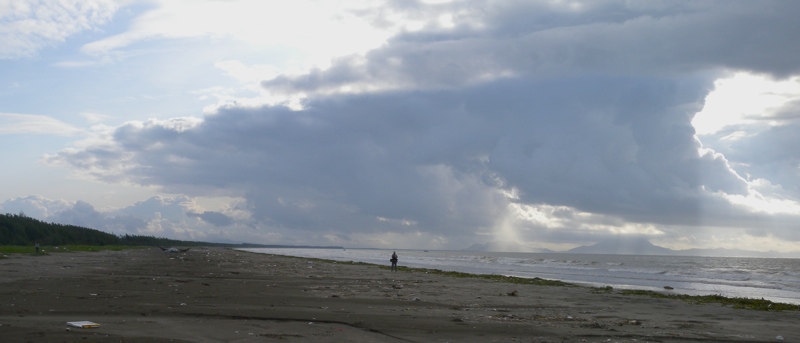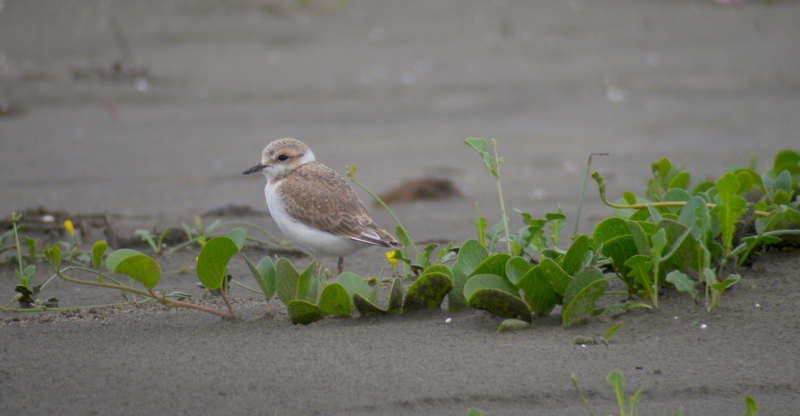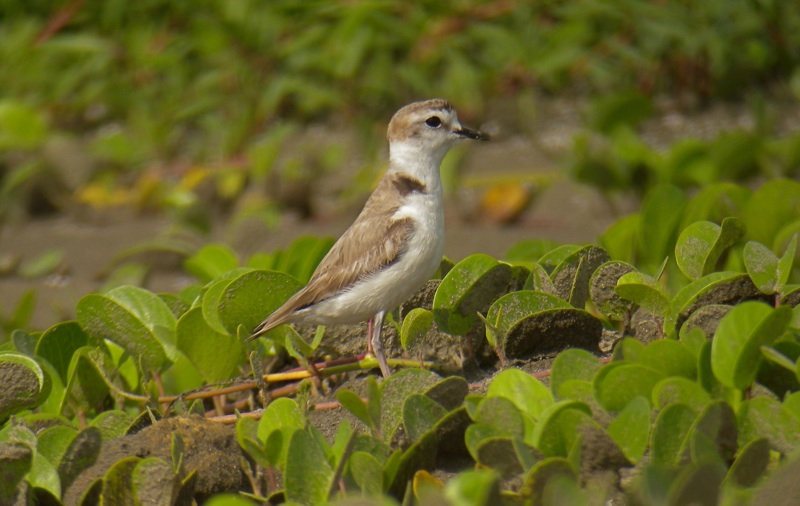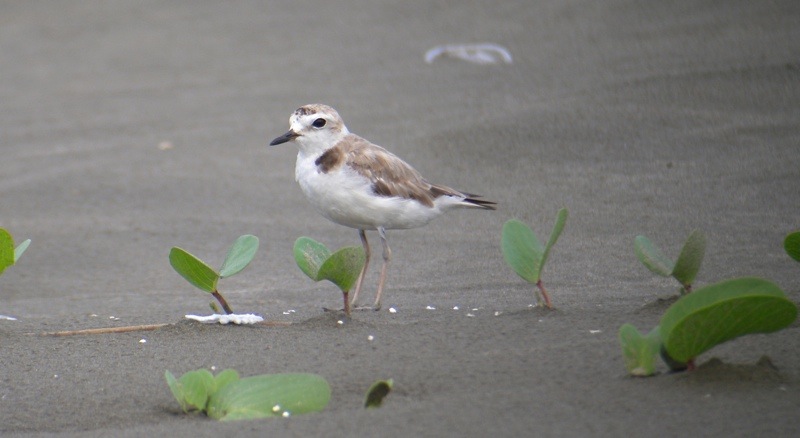breeding waterbirds in Eastern Guangdong 18-19 June 2011
Mid June is normally a desperate time to bebirding in southeast China. Any bird with any sense has fled north to cooler,less mosquito-infested climes, while typhoons lurk and the humidity loitersaround the 90% region.
However, temptation, in the form of a newlydiscovered breeding area for Swinhoe's Plover (a hot candidate for a split fromthe Kentish Plover group) and a nearby site for Purple Swamphen (a mega-rarebreeder in China) a couple of hundred clicks to the east of Hong Kong rearedits alluring head and
. . . Fridayevening I crossed the border to Shenzhen, jumped in a van and headed forHaifeng with Martin Hale, Richard Lewthwaite, and Shenzhen-based birder Brian Jones,whose hundreds of hours of exploring the area had created the platform for thetrip.
Three hours, 200km and a filet-o-fish from the24hr MacDonald's at the truckstop later we arrived, and checked into the hotelwith the hardest beds and the finest array of in-room intimacy enhancementsknown to man.
Anyone for a"Convulsionary condom" that would "let heartthrob" and"make woman feel joyous immediately". The 5:30 start the next morningsuddenly didn’t seem like such a bad idea after all!
The early start got us to the first stop -a beach with a pair of shagged out [B]Swinhoe's Plover[/B] holding territoryevery 150 metres or so.
For birdsin the height of the breeding season they were in a terrible state - deeplystressed, faded plumage, heavily bleached and worn coverts. According to Brian,who had been coming since March, the birds were just bringing off their secondbroods and were completely worn out. And watching the way they went about lifeit was hardly surprising.
Theywere anxiously shepherding chicks, fiercely chasing off interlopers andconstantly bobbing their heads up and down. Great to watch, but a terribleadvertisement for parenthood.
Despite this, the distinctive features thatseparate Swinhoe's from Kentish Plovers were evident - longer pale pink legs, alonger and deeper-based bill, white lores, a longer, paler wingbar and paleupperparts were common to all the adults.
The breeding habitat was a beach with arather shallow slope, backed by creeper-covered sand humps (dunes would be fartoo grand a word).
The sand wasgreyish and appeared to contain a good quantity of organic matter, while thetideline was littered with some sort of freshwater plant. As it decomposed thisprovided feeding for large numbers of flies that in turn provided food for theplovers.
By 0930 the best light for photography wasgone and we headed over to the mouth of a river at the northern end of thebeach.
This was interesting forthe presence of a sandbar that held some 150 Greater Crested, Little, Common(including alongipennis – with red legs and bill and adarker tibetana), Gull-billed and Whiskered Terns, as well as 20 CommonGreenshank, a Grey-tailed Tattler, two Grey Plovers and three CurlewSandpipers. However with Chinese Crested Ternsbreeding just 500km up the coast our big hope was of course to find one ofthese amongst the Greater Crested Terns. Despite the poor light and optimism(always a good combination for a bit of stringing) we were unable to identifyany candidates, and agreed to try again later.
In keeping with the time ofyear there were not many other birds around. The dominant species appeared tobe Long-tailed Shrikes, at least 30% of which were dark morph “fuscatus” birds, and largenumbers of egrets, especially Little and Cattle Egrets, while Chinese Francolins called from the hills above the beach.
More to come . . .
Mike K
Attachment
-
 DSCN6747 Dahu Beach bf.jpg
(69.87 KB)
DSCN6747 Dahu Beach bf.jpg
(69.87 KB)
-
25/06/2011 21:39
Dahu Beach

-
 DSCN6749 Juv Swinhoe's Plover 1.jpg
(98.89 KB)
DSCN6749 Juv Swinhoe's Plover 1.jpg
(98.89 KB)
-
25/06/2011 21:39

-
 DSCN6766 Swinhoe's Plover male 1.jpg
(118.36 KB)
DSCN6766 Swinhoe's Plover male 1.jpg
(118.36 KB)
-
25/06/2011 21:39

-
 DSCN6744 Swinhoe's Plover male 2.jpg
(75.66 KB)
DSCN6744 Swinhoe's Plover male 2.jpg
(75.66 KB)
-
25/06/2011 21:39



